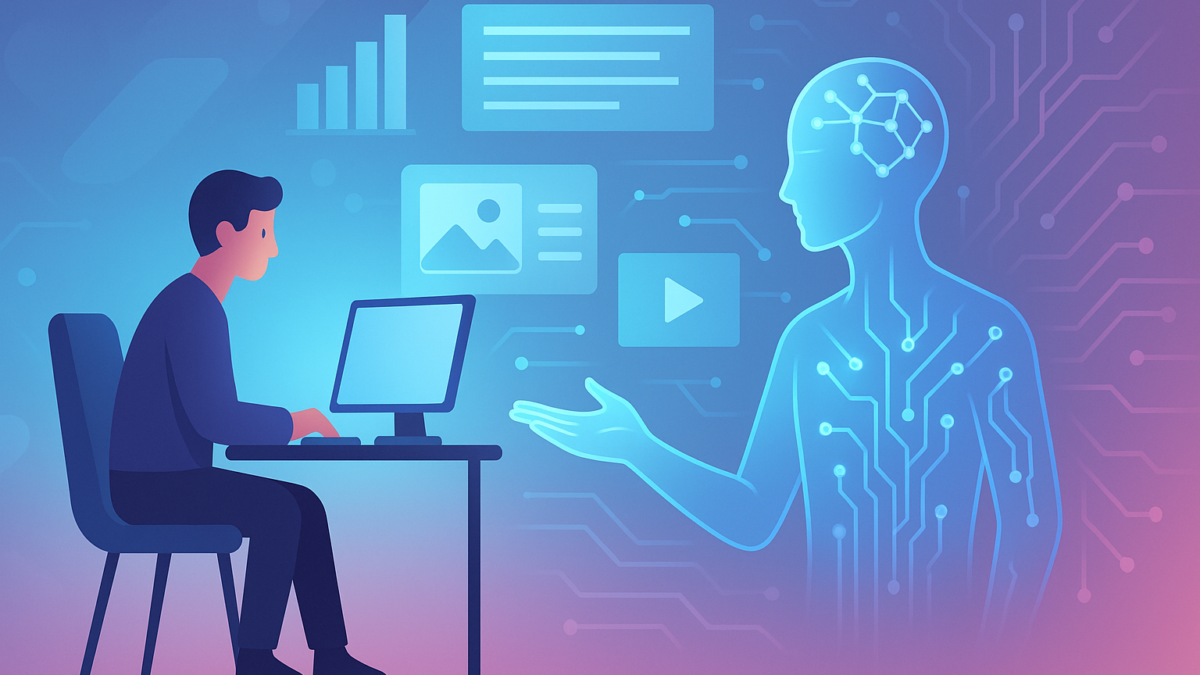How Generative AI Is Redefining Content Creation in 2025
Table of Contents
Introduction
Generative AI is no longer just a futuristic concept—it’s a transformative force reshaping how brands, marketers, and creators produce content. In 2025, AI-driven tools like ChatGPT, Jasper, and Runway ML are pushing the boundaries of creativity, speed, and personalization, enabling businesses to scale their content efforts like never before. But how exactly is generative AI changing the game? Let’s explore.
What Is Generative AI in Content Creation?
Generative AI refers to artificial intelligence systems capable of producing original text, images, audio, and even video with minimal human input. These tools analyze massive datasets to generate content that mimics human creativity while maintaining accuracy and relevance.
Examples of popular tools:
- ChatGPT for text generation
- DALL·E and Midjourney for AI images
- Runway ML for AI-driven video editing
Additionally Read Also: AI’s Impact on White-Collar Employment: Navigating the Future Job Market
Key Ways Generative AI Is Transforming Content in 2025
- Faster Content Production: AI can draft articles, generate social media posts, and create design assets in minutes—reducing production timelines by up to 70% (source: McKinsey).
- Hyper-Personalization at Scale: Generative AI enables tailored messaging for different audience segments, ensuring every piece of content resonates with individual preferences and behaviors.
- Multimodal Content Creation: From blog posts to videos, AI tools can now produce multiple content types simultaneously, helping brands maintain consistent omnichannel presence.
- Cost Efficiency: By automating repetitive tasks like caption writing, basic graphic design, and email copy, brands can reduce creative costs significantly without sacrificing quality.
Step-by-Step: How to Leverage Generative AI for Your Brand
Step 1:Identify Use Cases
Pinpoint where AI can add the most value—blog writing, social media captions, ad copy, product descriptions, etc.
Step 2:Choose the Right Tools
Select AI tools suited to your needs. For example:
- ChatGPT for long-form content
- Canva AI for design
- Synthesia for video avatars
Step 3:Set Clear Guidelines
Ensure AI-generated content aligns with brand tone and compliance standards.
Step 4:Human + AI Collaboration
Combine AI’s efficiency with human oversight for fact-checking, nuance, and emotional intelligence.
Step 5:Measure and Refine
Track engagement metrics and continuously refine your AI prompts and workflows.
Real-World Example
📝 Case Study: A leading SaaS brand used AI to generate localized blog content for 10 regions. The result? A 35% increase in organic traffic within 6 months while reducing content costs by 40%.
Challenges to Watch For
- Risk of generic or inaccurate output
- Potential copyright issues
- Need for transparency (e.g., disclosing AI involvement)
That’s why it’s crucial to blend AI output with human creativity and critical review.
Future Outlook: What’s Next?
In 2025 and beyond, we’ll see generative AI:
- Powering interactive content (quizzes, dynamic infographics)
- Driving real-time content adaptation in customer journeys
- Integrating deeper into CMS and marketing platforms
Ready to Embrace AI-Powered Content?
Generative AI offers incredible opportunities for brands ready to innovate. To stay competitive, it’s time to integrate these tools strategically into your content operations.
Explore iTMunch’s services to discover how we can help you harness AI for smarter marketing!
FAQs
Q1: Is generative AI content original?
Yes. AI generates unique content based on the data it has learned from—but it’s important to review and edit for quality and brand alignment.
Q2: Can I use AI to write all my content?
Not always. AI works best for first drafts or repetitive content, but human creativity is still essential for storytelling, emotional tone, and strategic messaging.
Q3: Is AI-generated content safe for SEO?
Yes, if used correctly. Make sure content is high-quality, helpful, and not spammy. Search engines prioritize value over who (or what) wrote it.
Q4: What’s the cost of using these tools?
Many tools offer free trials or pay-as-you-go pricing. Others (like Jasper or Synthesia) require subscriptions. Costs depend on how much and what kind of content you need.
Q5: Will AI replace content creators?
No. AI supports content creators by saving time on repetitive tasks. But human insight, creativity, and strategy are still essential.





